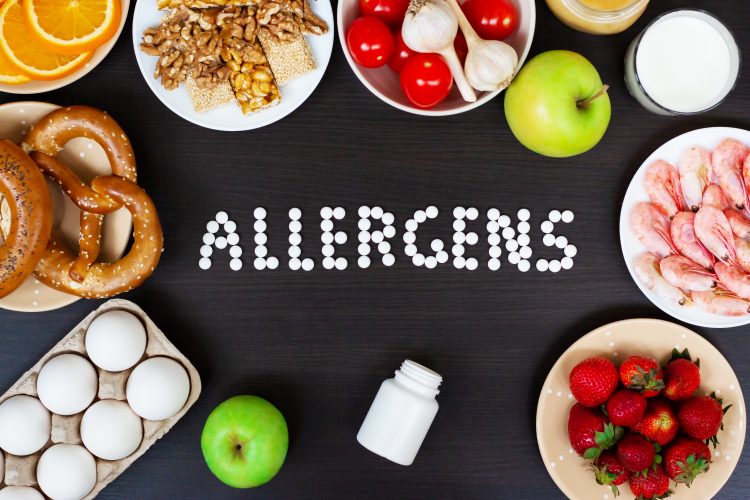How can manufacturers ease the allergen burden?
- Like
- Digg
- Del
- Tumblr
- VKontakte
- Buffer
- Love This
- Odnoklassniki
- Meneame
- Blogger
- Amazon
- Yahoo Mail
- Gmail
- AOL
- Newsvine
- HackerNews
- Evernote
- MySpace
- Mail.ru
- Viadeo
- Line
- Comments
- Yummly
- SMS
- Viber
- Telegram
- Subscribe
- Skype
- Facebook Messenger
- Kakao
- LiveJournal
- Yammer
- Edgar
- Fintel
- Mix
- Instapaper
- Copy Link
Posted: 28 January 2022 | Jenna Riemenschneider | 1 comment
With millions of people around the world managing food allergies, what can manufacturers do to attract the hypersensitive consumer?


For the 32 million Americans managing food allergies and their families, food allergen labelling is critical to their health, safety, and well-being. There is no cure for food allergies, so strict avoidance of the allergen is the only way to prevent a reaction. The importance of transparent and accurate food allergen labelling cannot be overstated.
A food allergy occurs when the body’s immune system sees a certain food as harmful and reacts by causing symptoms. This is an allergic reaction. Allergic reactions can involve the skin, mouth, eyes, lungs, heart, gut and brain. A severe allergic reaction known as anaphylaxis can be life-threatening.
Food allergies have been on the rise in the United States for the past three decades. While researchers don’t know definitively what caused this rise, there is consensus that infant feeding guidelines played a role. Twenty years ago, the guidelines recommended that parents wait until children were three years old before introducing peanuts or other common food allergens into their diet if their family had a risk for developing allergies. Parents then adopted these guidelines and the food allergy rates increased. The guidelines have since changed to recommend early introduction of allergens into an infant’s diet to try to prevent the development of food allergy, but the significant rise had already occurred. Today, about 10.8 percent of adults and 7.6 percent of children in the United States have food allergies.1 2


More than just a number
People who manage food allergies are also more than statistics. With the aim to better understand the social, emotional, physical and financial burden of food allergies on patients and families, the Asthma and Allergy Foundation of America (AAFA) conducted a patient survey in 2019 called “My Life With Food Allergy.”
The survey found that the emotional and social burdens of food allergies are especially onerous for parents of children with food allergies. Food is a fundamental part of life and families living with food allergy must be constantly vigilant to keep the child safe. The fear of anaphylaxis can take a heavy toll on children and their caregivers.
There are also significant financial and time burdens associated with managing food allergies. As of 2012, the annual cost of childhood food allergies is just under $25 billion in the United States overall, which includes $5.5 billion for non-medical out-of-pocket expenses like specialty foods.3 AAFA’s survey found the most burdensome financial and time burdens associated with safe foods included the cost of specialty food, the time spent shopping, the time spent calling manufacturers, and the travel time to specialty grocery stores.4
These burdens stem from the fact that people with food allergies and their families must know exactly what is in their food to know that it is safe. There is immense opportunity in attracting the allergy aware consumer and food allergen labelling is at the core of it.
Legislative change
In 2004, Congress passed the Food Allergen Labeling and Consumer Protection Act (FALCPA) which requires major food allergens to be listed in plain language either in the ingredients section or in a “contains” statement on a packaged food product label. At the time, eight major food allergens were identified that accounted for 90 percent of documented food allergies in the United States: milk, eggs, fish, crustacean shellfish, tree nuts, peanuts, wheat, and soybeans.
This list was expanded to include sesame in 2021 when Congress passed the Food Allergy Safety, Treatment, Education, and Research Act (FASTER)—a major win for the food allergy community after years of advocacy. Manufacturers now have until January 1, 2023 to label sesame as a major allergen on their packaging.


Congress passed the FALCPA Act in 2004
While mandated, clear labelling of the top nine major allergens is a start, more than 170 foods have been identified as triggers of food allergy. There is no expectation that all foods known to trigger an allergy need to be labelled in the same way as the top nine major allergens nor be subject to the same allergen control programs, but manufacturers should see plain, transparent labelling as a market opportunity.
How can manufacturers help?
Brand loyalty is very high among allergy aware consumers because finding safe foods is so challenging and there is a simple lack of choice. Entire households also often avoid an allergen both to ensure safety and to increase convenience. Preparing different, safe meals adds to the burden of food allergy and is often avoided. This is especially true for households with multiple children.
So, what can manufacturers do to attract the allergy-aware consumer? A few simple things:
Strive for clear, transparent, easy to read labels.
Reading a food label should not require a degree in chemistry. Use plain language and disclose as much as possible to assure consumers with food allergies that your product is safe. The most transparent labels will lead to loyal consumers.
Increase the availability of product and allergen information online and at point of sale from online retailers.
Navigating online food shopping to find safe foods is a frustrating challenge amplified by the COVID-19 pandemic. How people purchase groceries has changed, and therefore, so must how industry sells it. Access to critical allergen information online is desperately needed.
Work with food allergy patient advocacy groups.
Allergy-aware consumers want to buy more foods and have more choices. By working with patient groups, manufacturers can explore the current unmet needs of these consumers and find effective ways to disclose necessary product information in a way that reduces burdens on both parties.
AAFA tells our community members to read every label, every time. And while improved food allergen labelling may not change the message, it has great potential to change the emotional, social, and financial burden of food allergies.
About the author
Jenna Riemenschneider is the Director of Advocacy and Special Projects at the Asthma and Allergy Foundation of America (AAFA). Currently, Jenna advocates on behalf of the over 60 million Americans with asthma and allergies to federal and state lawmakers and officials. She oversees the foundation’s policy and advocacy priorities which include health equity; food allergies; access to care, medicine, and coverage; clean air and the health impacts of climate change; healthy settings for those with asthma and allergies; and funding for federal programs that benefit people with asthma and allergies.
References:
- Gupta, R. S., Warren, C. M., Smith, B. M., Jiang, J., Blumenstock, J. A., Davis, M. M., Schleimer, R. P., & Nadeau, K. C. (2019). Prevalence and Severity of Food Allergies Among US Adults. JAMA Network Open, 2(1), e185630. https://doi.org/10.1001/jamanetworkopen.2018.5630
- Gupta, R. S., Warren, C. M., Smith, B. M., Blumenstock, J. A., Jiang, J., Davis, M. M., & Nadeau, K. C. (2018). The Public Health Impact of Parent-Reported Childhood Food Allergies in the United States. Pediatrics, 142(6). https://doi.org/10.1542/peds.2018-1235
- Gupta, R.S., Holdford, D., Bilaver, L., Dyer, A., Holl, J.L., Meltzer, D. (2013). The Economic Impact of Childhood Food Allergy in the United States. JAMA Pediatr. 167(11):1026–1031. doi:10.1001/jamapediatrics.2013.2376
- Asthma and Allergy Foundation of America (2019). My Life with Food Allergy: Parent Survey Report. https://www.aafa.org/media/2451/aafa-my-life-with-food-allergy-parent-survey-report.pdf
Related topics
Allergens, Ingredients, Regulation & Legislation, The consumer










Great start. Let’s name those companies doing it well for 2 reasons: 1. confirm which brands we can rely on and advocate for. 2. Show non-conforming companies who they should be learning from. Industry is going to need to help each other on best practices and policies. Advocate groups rightfully educate on the challenges, but can not solve for them.